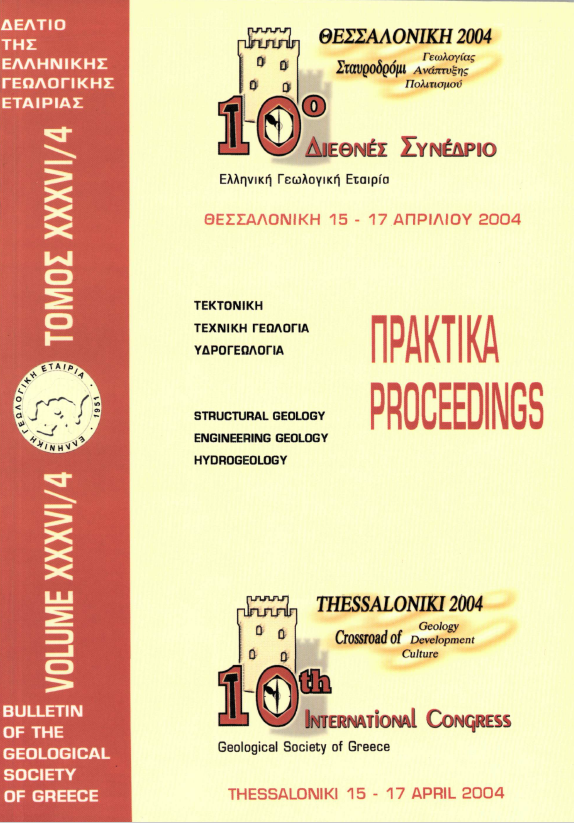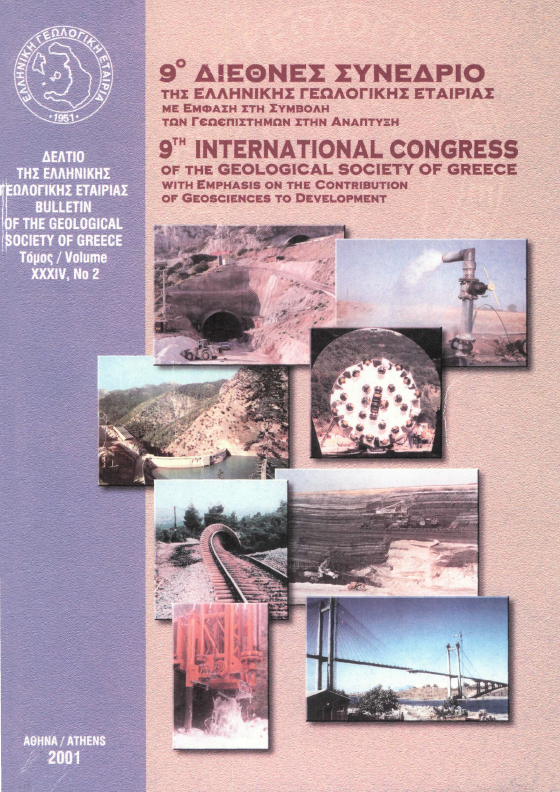TECTONO-SEDIMENTARY EVOLUTION AND RATES OF TECTONIC UPLIFT OF THE SFAKIA COASTAL ZONE, SOUTHWESTERN CRETE

Abstract
Sfakia lies within a narrow coastal zone at the southwestern foothills of the Lefka Ori Mt. Here a segment of the South Cretan margin is preserved onshore, a structure that represents a neotectonic structure with continuous activity since the Upper Miocene. This segment is characterized by a steep, E-W striking and south facing morphological escarpment that constitutes numerous E-W and ESE-WNW striking normal faults. Since the Late Miocene, marine sequences of Tortonian, Early Pliocene and Lower Pleistocene age were deposited along the coastal zone. Since the Middle Pleistocene multiple, coalescent alluvial fans covered both the alpine basement and the marine sediments. Fault-kinematic- and stratigraphie data combined with recently published palaeobathymetry reconstructions allow us to make relable estimates of both the uplift rates of fault blocks in the study area and the period that the faults that demarcate them were active. The results show that the study area is experiencing uplift already since the Middle Pliocene and that the uplift rates of the mountainous parts are higher than those of the coastal zone. The general uplift of the coastal zone seems to be controlled by offshore normal faults, south of Sfakia
Article Details
- How to Cite
-
Skourtsos, E., Pope, R., & Triantaphyllou, M. V. (2007). TECTONO-SEDIMENTARY EVOLUTION AND RATES OF TECTONIC UPLIFT OF THE SFAKIA COASTAL ZONE, SOUTHWESTERN CRETE. Bulletin of the Geological Society of Greece, 40(1), 475–487. https://doi.org/10.12681/bgsg.16649
- Section
- Tectonic- Dynamic- Applied Geology

This work is licensed under a Creative Commons Attribution-NonCommercial 4.0 International License.
Authors who publish with this journal agree to the following terms:
Authors retain copyright and grant the journal right of first publication with the work simultaneously licensed under a Creative Commons Attribution Non-Commercial License that allows others to share the work with an acknowledgement of the work's authorship and initial publication in this journal.
Authors are able to enter into separate, additional contractual arrangements for the non-exclusive distribution of the journal's published version of the work (e.g. post it to an institutional repository or publish it in a book), with an acknowledgement of its initial publication in this journal. Authors are permitted and encouraged to post their work online (preferably in institutional repositories or on their website) prior to and during the submission process, as it can lead to productive exchanges, as well as earlier and greater citation of published work.








